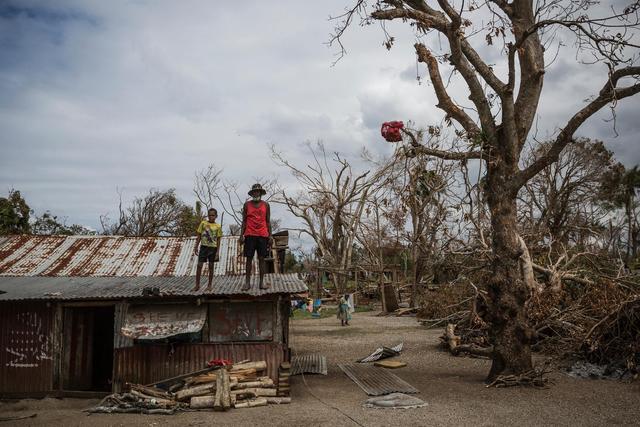联合国儿童基金会表示:随着厄尔尼诺现象的增强,儿童的生命受到威胁
2015-11-10

© UNICEF/NYHQ2015-0512/Sokhin
2015年3月,瓦努阿图遭颱风「帕姆」吹袭,一名儿童和一个老人家正站在遭破坏的建筑物屋顶上。
纽约/日内瓦/香港,2015年11月10日—联合国儿童基金会周二警告,受厄尔尼诺影响,仅非洲东部及南部地区就有多达1,100万儿童面临饥饿、疾病和缺水的风险。此现象亦导致亚洲、太平洋和拉丁美洲部分地区出现旱灾及氾滥。
联合国儿童基金会在《厄尔尼诺现象对儿童的影响 — 警钟已经敲响》报告(只提供英文版本)中指出,受影响的社区在农作物失收和饮用水缺乏时,若得不到支援,当地儿童将营养不良,並受到致命疾病的威胁,厄尔尼诺现象造成的后果可能波及数代人。
除了死亡和受伤等即时威胁,厄尔尼诺现象还可能导致疾病的显着增加,如疟疾、登革热、腹泻和霍乱。这些疾病都是儿童的主要杀手。当极端天气剥夺了社区的生计,幼儿常会患上营养不良,使他们患病的风险增加,智力发展迟缓,甚至过早死亡。
联合国儿童基金会执行主任安东尼‧雷克说:「儿童和他们的社区需要我们帮助,以便从厄尔尼诺的影响中恢復过来,並准备好应对此现象将带来的进一步破坏。与此同时,这种现象的强度和潜在破坏力,也为到巴黎参与会议的全球领导人敲响警钟。在讨论限制全球暖化合约的议题上,他们应该考虑到,如今的儿童及他们所承袭的星球,都面临着岌岌可危的未来。」
各国领导人将参加于11月30日至12月11日期间在巴黎举行的联合国第21届气候大会,亦即第二十一次缔约方会议(COP21)举行。大会将致力于达成一项全球化、具有约束力的协议,旨在通过削减温室气体排放限制全球暖化。
厄尔尼诺不是由气候变化导致,但是科学家认为受气候变化的影响,厄尔尼诺现象将愈趋严重。面临气候变化重大威胁,许多国家也受是次厄尔尼诺现象冲击的国家。许多受影响地区普遍贫穷。
这种气候现象正以有史以来最强的强度出现,很可能造成洪水氾滥和旱灾,加剧太平洋的颱风和旋风。如果厄尔尼诺像预测的那样,在未来数月裏继续增强,受影响的地区还会继续增多。
部分受厄尔尼诺影响最大的国家包括:
- 索马里:由于农作物失收和缺乏食物,多达300万人都需要接受援助。严重的洪水还会使情况加剧。
- 埃塞俄比亚:该国正面临30年一遇的大旱灾,820万人因此食不果腹,约35万名儿童急需营养援助。
- 印尼:厄尔尼诺加剧了泥炭和森林火灾的影响。据当地政府统计,仅八、九月期间,就有27.2万人患上了急性唿吸道感染,儿童患者佔其中的大多数。
- 太平洋国家:厄尔尼诺威胁400多万人的食物和饮水需求。
- 中美洲:厄尔尼诺还导致中美洲出现了史上最严重的旱情。危地马拉、洪都拉斯及萨尔瓦多三国共有350万人受旱灾影响。
- 秘鲁:政府预计约有110万人,包括40万名儿童及青少年将受到影响。
- 厄瓜多尔:权威机构认为会有150万人面临危机,其中半数都是儿童。
厄尔尼诺受太平洋暖流影响,每2至7年出现一次。这一现象对世界各地的天气模式产生深远的影响。
| 立即捐款,帮助灾难中的儿童 |









